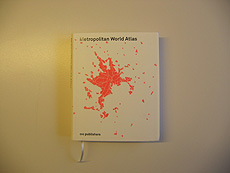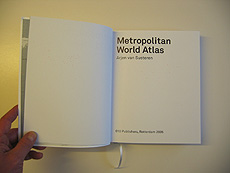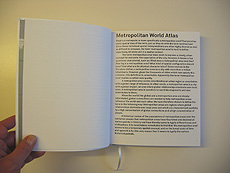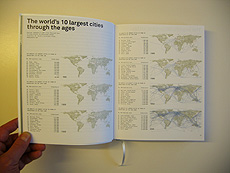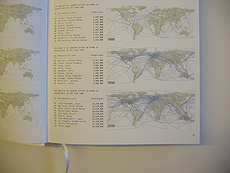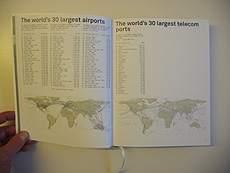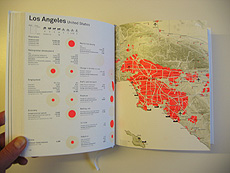Possibilities to geolocate Youtube video into Google Map
After books and books locations being mapped into Google Earth (or trying to...), Google is working on the geo mapping of video content from Youtube.
This excerpt taken from Google Earth Blog: "The brief mention on the new feature in the YouTube blog doesn't tell us anything about what they've planned for this new capability. But, given the ability of Google Maps to show video clips inside placemark descriptions, it can't be that long before they have an ability to show YouTube videos based on location in Google Maps. In fact, I'm sure they are somehow creating KML files associated with the locations of the videos and will be able to show videos tied to a search for a location. There will be even more possibilities when they can have a KML network link to show video locations in either Google Earth or Google Maps. Having an ability to access YouTube videos which are geotagged with an API would be really nice. And, hopefully they will allow people to add location to existing YouTube videos."
Read the full post about it here.
----
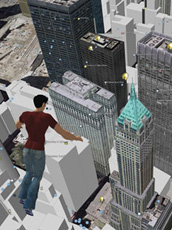
Within this context, I also mention this long article ---Second Earth--- published in the latest MIT Technology review about the potential merging of projects like Google Earth and 2nd life and where they make an analysis of "Mirror worlds" vs "Virtual worlds" vs "Metaverse"! As well as a description of actual technologies or projects that will contribute to the emergence of such parallel worlds.
Posted by patrick keller at 10:18
Cyber carbon footprint
After the "Avatars comsume as much electricity as Brazilians", something about "Cyber warming: PCs produce same CO2 emissions as airlines" says a recent article in The Independent (UK).
-
"(...). Ministers will this week embark on a campaign to curb "cyber-warming" from computers and information technology equipment that now does as much damage to the climate as aircraft emissions.
(...). The two initiatives will mark the biggest official attempt to address some of the environmental consequences of the extraordinarily rapid spread of IT into almost every aspect of daily life. Up to eight million new computers are sold in Britain every year, along with 1.8 million Wi-Fi terminals in the past 18 months.
A government-backed task force is to launch an attempt to reduce what it calls the "cyber carbon footprint" - which threatens to wreck attempts to hit targets for reducing emissions of carbon dioxide, the main cause of global warming - and to encourage the spread of "green" technology.
New research shows that computers generate an estimated 35 million tons of the gas each year - the equivalent of one million typical flights to and from the UK. And Gartner, the international information technology research company, estimates that globally the IT industry accounts for around 2 per cent of carbon dioxide emissions - much the same as aviation. (...)"
Read more about it here.
Another obvious and forseeable exemple of a mish-mash situation: energetic costs of computers, communication and processing power, "cyber carbon footprint".
Ubiquitous computing is probably close to happen (or has it already happened? we can definitely discuss about this), but it sure wouldn't be a luxury to think twice about its energetic counterpart before it happens, so to not contribute to an already outdated universe on a sustainable design point of view, no matter what "sci-fi" it might look like.
Thanks http://del.icio.us/regine for the link to the article of The Independent.
Posted by patrick keller at 14:26
Paul Cocksedge in Milan
Angelo Benedetto (head for ECAL's Visual Communication) sent me some links about the exhibition space Paul Cocksedge has designed for Trussardi at this year's Milan design fair (Salone Internazionale del Mobile) .
These images have already been published quite a lot I guess, but I do it one more time as they have some link to the variable nature of space (variable wavelenghts and temporary mediatized relation to space in this case)!
The space looks black at first eye sight, with seemingly nothing to look at or no piece exposed until you understand that you have to look at it through the eye of the camera on your cellphone: the exhibition can only be seen in the infrared wavelenght, which our eyes obviously can't but a camera can ("night shot" turned "on").
A light filter placed on the windows achieves this simple effect.
-
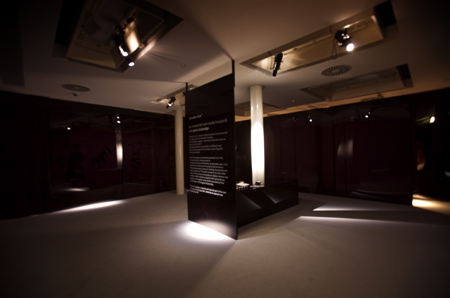
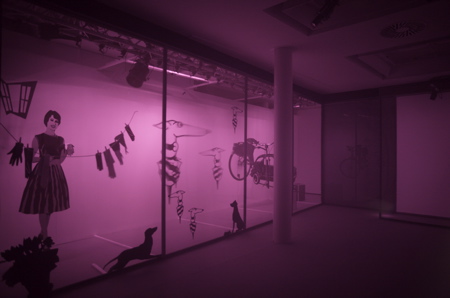
Posted by patrick keller at 11:02
Airs de Paris / Diurnisme / Philippe Rahm
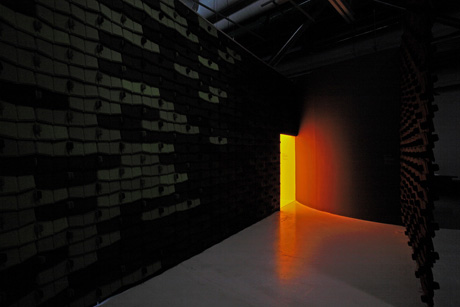
-
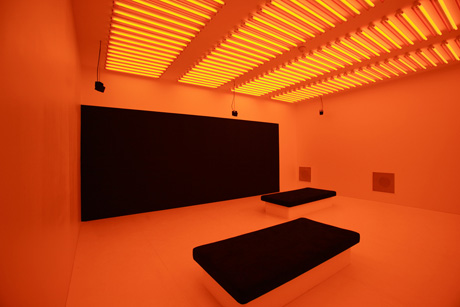
Diurnisme is the last space exhibited by Philippe Rahm during the "Airs de Paris" exhibition at the Centre Pompidou in Paris (25.04-15.08.07). It is a space that artificially and physiologically creates the conditions of night during the day. It is a sort of counterpart for the electric night illuminations we all know now for decades in our houses and cities and that have extended the day into the night and let us develope new social behaviors (like different types of day time activities at night, even the birds are confused now and sing at night in big cities!).
What kind of new functions and social behaviors might produce such "night at day"spatiality?
Additional explanations about Airs de paris and Diurnisme in this short ARTE video.
Posted by patrick keller at 15:18
Book: Responsive environments, Architecture, Art and Design
Writer and curator Lucy Bullivant published last year a book about *Responsive environments" for the Victoria and Alberts Publications. She also published last year a book about "4d space".
Responsive environments --"by definition spaces that interact with the people who use them, pass through them or by them" says Lucy Bullivant (what about other type of interactions I would ask? interactions with climate, dynamic charts and data, energy consumption, etc.?)-- designed by different persons or teams with different backgrounds and objectives (that include architecture, design and arts) show a common interests for the ongoing transformations in our everyday "livable environments", even if most of these projects reveals to be still quite experimental at the moment.
The book presents projects by Ben Hooker/Shona Kitchen or Philippe Rahm (who both did a workshop for the Variable_environment/ research project), HeHe, Usman Haque, the "relational architecture" of Raphael Lozano-Hemmer, the "bix" media facade and communication architecture of Realities:United for Peter Cook (former Archigram's member) and many other projects.
-
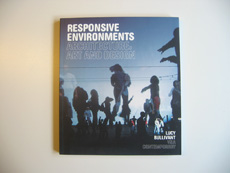
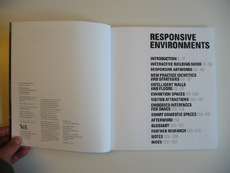
-
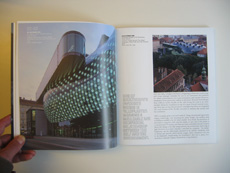
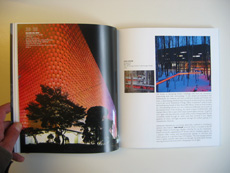
-
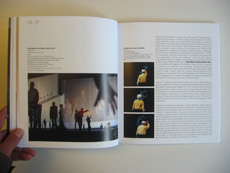
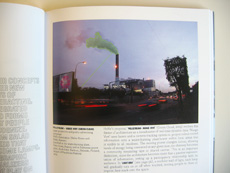
-
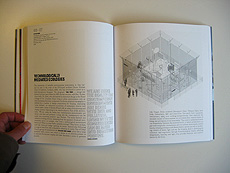
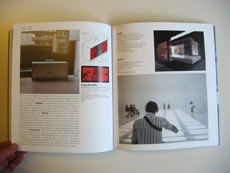
-
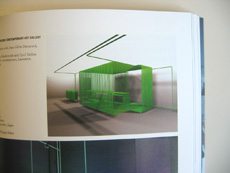
Posted by patrick keller at 17:42
Furnish - Die Gestalten Verlag
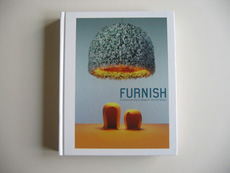
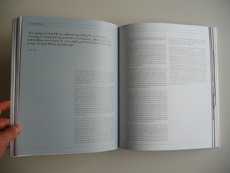
-
The book Furnish, Furniture and Interior Design for the 21st Century, with texts by Sophie Lovell and edited in 2007 by The Gestalten Verlag (Berlin) contains a full section about "environments".
These designs are not "smart" environments, are not architecture, are not objects, are not interior designs but they emphasize an experimental transversal design area at a "micro-architecture" scale where both designers, architects and artists can works and/or collaborate and where they are now active. Those environments also show a more free approach towards "modern era frozen functions" (like the partitioned "sleeping room", the "bathroom", the "office", the "living room", the "kitchen", etc.)
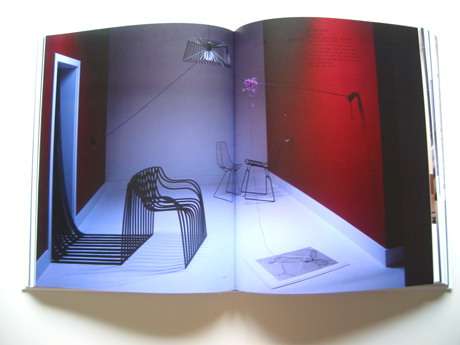
-
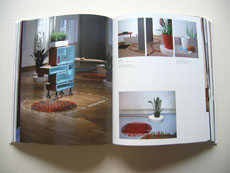
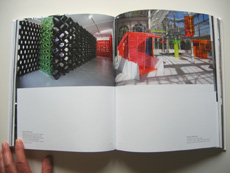
-
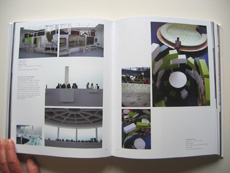
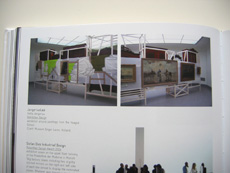
-
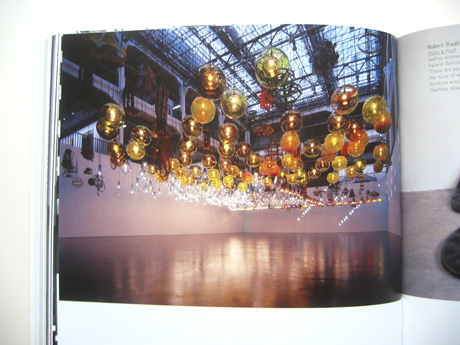
-
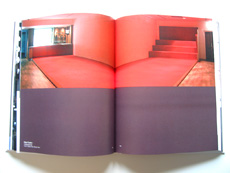
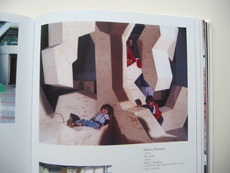
-
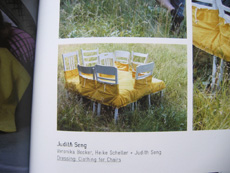
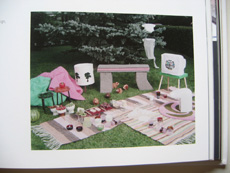
Posted by patrick keller at 15:58
Revisiting the Intelligent House - Art Center Pasadena & Vitra Design Museum exhibition
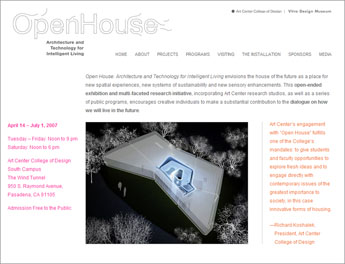
-
Vitra design Museum and the Art Center have organised a joint exhibition, Open House: Architecture and Technology for Intelligent Living, around the retro-futuristic idea of the "intelligent house" (formerly known as "house automation" and now as "smart house" or "smart environment").
Several projects have been commisioned to explore this question including one by Ben Hooker and Fiona Kitchen. Ben Hooker was our guest at ECAL during Workshop#2: Designing for mish-mash around the real-virtual environment hybridation problematic.
Posted by patrick keller at 18:32
Will we "learn" again from Las Vegas (in Google Earth)?
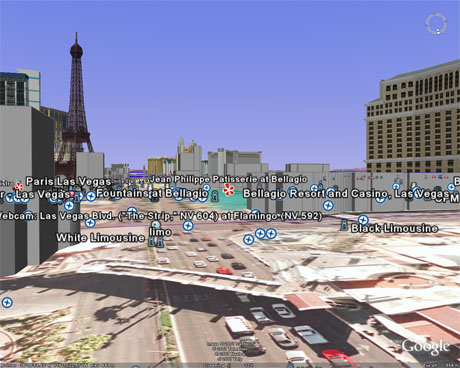
-
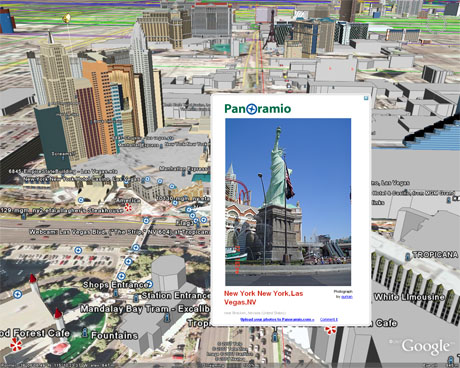
-
The title of this post is of course a bit of a joke, but it is especially a wink to the famous book by Robert Venturi & Denise Scott Brown, Learning from Las Vegas published in 1972.
As I was following with distance some GE blogs, I noticed a few weeks ago a certain quantity of posts announcing new "buildings" with good realistic qualities in "Las Vegas". This sounds like a comment on the real city!
As Las Vegas is mostly already the transposition of existing buildings or monuments into an entertainment city, an "island" in the middle of the "desert", as it is a "faked reality made real", a conditioned space, it has already a lot in common with a "2nd world": the duplication of an existing situation with all the problems we can see in Las Vegas. It hardly generates more than an amusement park for grown up...
So to say and by extension, we could tell that Google Earth is becoming a kind of global Las Vegas (even if it is still not an entertainment park at the moment we write these lines)) but that Las Vegas into Google Earth has the hidden potential to become something much more conceptual, intriguing and complicated: a Las Vegas located both as an island into the desert and into "Global Las Vegas"... An "überpop" city.
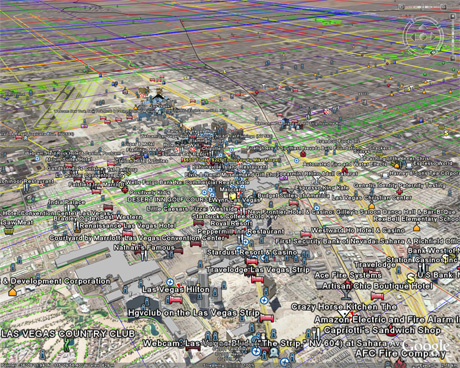
-
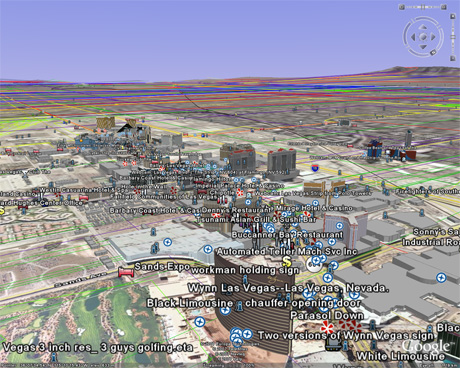
-
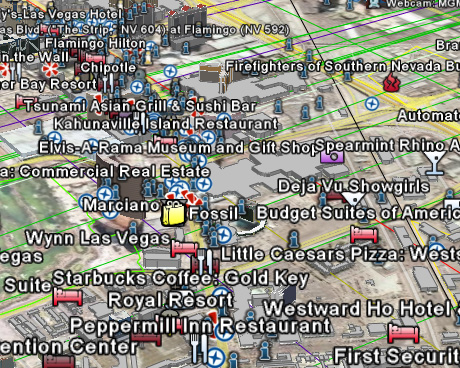
-
It looks now pretty clear to everyone that Google is building a "geo-mapped - search everything from anywhere" system (even locations in books will be mapped) with references potentially working in all directions: from digital to real, real to digital, fiction to real, digital to fiction, real to real, digital to digital, etc.
With Sketchup as a free modeling tool and therefore the possibility for everyone to create new Google Earth layers or objects (as well as any geo web content), Google just need to turn GE into a multi-user / 2nd Life like universe to get a kind of ultimate 2nd world like project and connect everything: get geo-referenced data on you future cellphone, hybridize digital and real life, play with your avatars on the GE layer you want or you just have created, fake your real home, etc.
Those GE images gives a good idea of the complex mediated and layered world we could possibly live in the next decades. This could become the "second learning from Las Vegas": an hybrid fake, highly layered and mediated space, that if it gets combined with powerful visual AR mobile devices/softwares, such as the Nokia MARA one, could produce an instant real-soft city/earth.
You just miss now the concrete building of some Google Earth icons into real Las Vegas, of a Casino-hotel based on a successful ego-shooter game and the mish-mash mapping of everything into everything to get the look of the potential future city. A city where you won't be able to tell what was first, second or third, what is physical or digital, real of fake, etc.
We can now discuss if this is good or bad (I mean, do you really like to eat a deep-dish pizza on the Piazza San Marco in Las Vegas!!?), but the process looks to be on its way...
Posted by patrick keller at 12:46
Technology Review 10: Augmented Reality
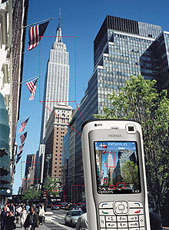
-
Nokia research is still working around its MARA (Marker-less Augmented Reality) project. Mostly for location based services.
The MIT magazine Technology Review speaks about it as one of the "significant emerging technologies" in its annual 10 emerging technologies report. Read the article about it here.
Posted by patrick keller at 10:38
Mashing books' content with Google Earth & Geodata
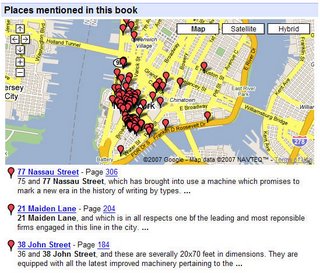
-
Google announced a couple of weeks ago that they wanted to map book's locations into Google Earth. As explained by David Petrou, a software engineer, on Inside Google Book Search blog.
Posted by patrick keller at 14:35
Jared Diamond
While I'm speaking about Philippe Rahm's works, I take the opportunity to mention a writer and book he was speaking about during the workshop he led for Variable_environment/ at ECAL/Ra&D last June 2006.

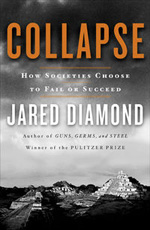
-
Jared Diamond, an American evolutionary biologist who wrote books about the evolution (Guns, Germs, and Steel (1997)) and collapse (Collapse: How Societies Choose to Fail or Succeed (2005)) of great civilizations under a climatic point of view. He claims that "ecological factors account for the development of civilizations and technologies" or examines "what caused some of the great civilizations of the past to collapse into ruin and considers what contemporary society can learn from their fates".
Posted by patrick keller at 12:02
Hormonorium vs. reduced oxygen content in the house
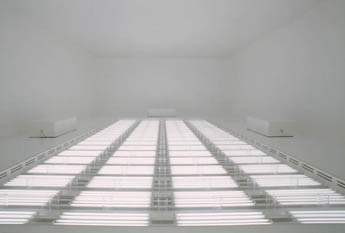
-
In 2002 for the Venice Biennial of Architecture, Philippe Rahm (see Workshop#3) produced the Hormonorium with his former partner Jean-Gilles Décosterd. The space was about a climatic and light displacement, bringing high moutain conditions (10'000 lux glacier bright light and reduced quantity of oxygen) into the chocking atmosphere of the laguna.

-
I just saw the previous images on BLDG about a functional training environment with the following comment.
It doesn't tool so long to see Rahm's architectural fiction come into "everyday"'s life (in a very functional and applied way unfortunately).
Posted by patrick keller at 11:45
Pixelnotes by Duncan Wilson
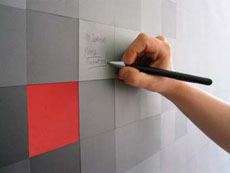
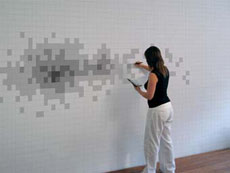
-
A project that has already been published several times in magazines. But well, yes, this is another way to produce a "variable environment" wallpaper, an "analog" way...
Read more on Duncan Wilson's website.
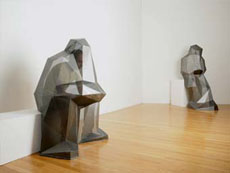
-
Take a look also to the PSP personal environments / furnitures he did in collaboration with other students at the RCA.
Posted by patrick keller at 17:13
Electrifying the alphabet (back to the 60ies)
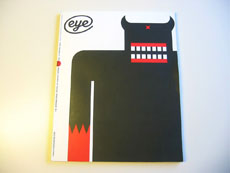
-
Volume 62 of the english graphic design magazine Eye countains an essay written by Sarah Owens about *Electrifying the alphabet*. This is history now and it brings us back into the 60ies, but it is interesting to read an article about a time when typographers were dealing with such experimental design questions as to make a typeface become readable by a machine or by both a machine and a human... --Thimoty Epps did a trial in this direction back in 1969, see eye_51_s.jpg below--). We all know now how useful this has revealed to be!
So this was the time of OCR (Optical Character Recognition) and MICR (Magnetic Ink Character Recognition --i.e. E13B, commissioned by the American Bankers, that was used and still is on cheques) technologies. But also such types as the OCR-A in 1966 or then OCR-B designed by Adrien Frutiger in 1969.
Even if not at the same level at all, I can see a thematic continuity between all those efforts of the 60ies and what we've tried to do during this project, with pattern designs & objects dedicated to be recognised by (web)camera, computers and softwares (XjARToolkit).
Finally, Sarah Owens ends her essay that way:
"[...]
Symbols of a new modernity
Electronic alphabets were very much a product of their time, heralding a new age of electronically controlled communication, symbols of a new modernity. As results of both technological innovation and successful collaborations between engineers and design fields, they inspired and helped to advance typography into a new age: contemporary screen typefaces would be unimaginable without them. Perhaps it is now time for contemporary experimental typography to make a similar, lasting contribution."
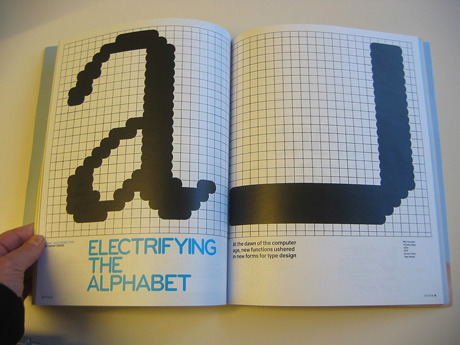
-
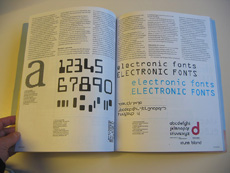
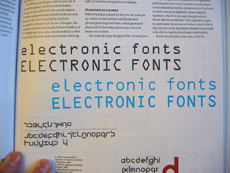
-
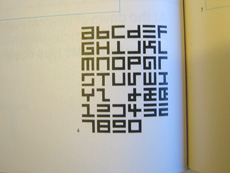
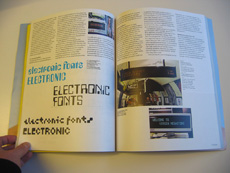
Posted by patrick keller at 16:36
Powder RFID
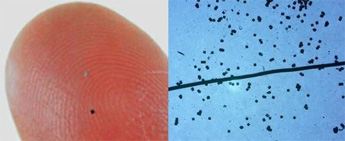
-
Christian Babski just sent me this link to the french gizmodo weblog: rfids that are small enough to look like powder... and be dissolved everyware...
Read more about it on MIT Technology Review.
Posted by patrick keller at 14:10
Everyware
Christophe Guignard sent me last november (...) this link to an online retranscription of a discussion between Adam Greenfield and Christina Ray. They talk about "Ubiquitous Computing", more precisely about the book "Everyware: The Dawning Age of Ubiquitous Computing".
As a theme, "ubiquitous computing" is in close relationship with the situation we tried to point out as a starting point of this project back in spring 2005. We then focused on what could be designed within/for such an environment, trying to unfold its hidden potential and eventualy (probably) ending up with problematic objects or environments (webcamera/mirrors and tracking softwares for your home or visual environments and products for camera and softwares), or objects that ask questions, some could be ethical.
Within their discussion, Adam Greenfield precisely rises some questions about "morality" and responsability for the ones who will produce designs for these "unbiquitous environments".
-
The discussion starts like this:
"Interview with Adam Greenfield
by Christina Ray
I recently met up with Adam Greenfield, author of Everyware: The
Dawning Age of Ubiquitous Computing, to discuss the book's ideas over
coffee. Everyware was published in 2006 and draws upon Adam's
background as a user experience consultant and critical futurist to
describe the subtle yet persistent diffusion of computing technology
into the landscape. Against the espresso machine hum, the cafe's iPod
shuffling through indie rock tunes, and the register jingle, we
talked about speed and convenience as the seductions that drive our
increasingly mediated reality. And we pondered the cultural,
ecological, and ethical costs of living with everyware and where we
go from here . (...)"
and you can read the rest of their chat HERE.
-
Since last november, another interview of Adam Greenfield about his book by Régine Debatty and Nicolas Nova was also published on WMMNA and on Pasta & Vinegar.
-
On this same blog, there was yesterday a post about ubiquitous computing (review of talks given during Lift07 conference).
Posted by patrick keller at 11:35
Cradle to cradle
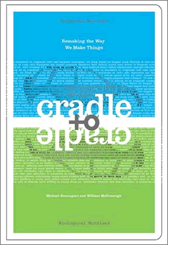
-
During Workshop#5 (Language of Pattern) led by Rachel Wingfield, she mentioned this book as a big reference about sustainable design for her work & Loop.pH's approach.
I just give the link to the book written by William McDonough & Michael Braungart here.
Posted by patrick keller at 16:01
Personal technology
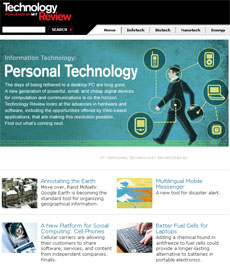
-
MIT's Technology Review reports about Personal technology (to relate with Variable_environment's quick images about Personal environment) and its potential evolution. With topics that interests us such as "Annotating the earth" (Google Earth type of things, to relate with "AR Ready" simple objects based on AR signs/patterns), A New Platform for Social Computing: Cell Phones or The Evolution of Wireless.
Posted by patrick keller at 15:24
Resurgence/revival of the avatar or the "2nd lifes/worlds" kind of questions
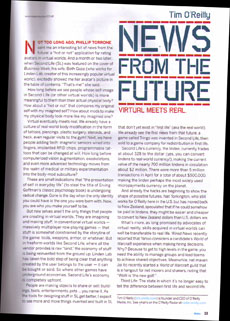
-
In an article published in MAKE Magazine volume 07 ("News from the future" section by Tim O'Reilly), you'll find an interesting short essay about first, second and possibly third life and about yet another mishmash situation (our own body in this case).
-
There is also an interview of Tor Lindstrand on Archinect about Architecture's Second Life and a recent post about Google earth + sketchup by Nicolas Nova on Pasta & Vinegar.
That's a revival! Possibly the first one in the digital era since the arcade/pixel games nostalgia. What about avatars wearing late 90'ies like clothes in 2nd life!?
-
I'm personnaly not a big fan of those kind of "duplicated reality" approaches for 2nd worlds where you should rather face Moore's law than the gravity one. But it's funny to consider that such projects, which were buzz but not working at all 10 years ago (think about the 2nd world of Canal+ where we produced a "digital museum" back in 1999), are now complete buzz again.
It looks like there is definitely a before and an after Google earth, MySpace, 2ndLife, etc. and that the conditions to see a more massive presence of so called "virtual worlds" (and then possibly deeper hybridization between 1st & 2nd) are now joined together (partly because of technical issues but also essentially because those environments are now part of the daily social network).
Posted by patrick keller at 10:44
Avatars consume as much electricity as Brazilians
A del.icio.us link to Rough Type found on Regine's w-m-m-n-a blog. Yet another "mish-mash" (hybrid) situation... (see our mish-mash posts and workshop within the frame of this project).
----------------------------
December 05, 2006
Tony Walsh has, as others do, some doubts about whether Second Life is sustainable as a business. But he also poses another question that I hadn't come across before: "Is Second Life sustainable ecologically?"
He quotes Philip Rosedale, the head of Linden Lab, the company behind the virtual world: "We're running at full power all the time, so we consume an enormous amount of electrical power in co-location facilities [where they house their 4,000 server computers] ... We're running out of power for the square feet of rack space that we've got machines in. We can't for example use [blade] servers right now because they would simply require more electricity than you could get for the floor space they occupy." MORE.
----------------------------
Posted by patrick keller at 15:47
CV Lab - EPFL / Softwares
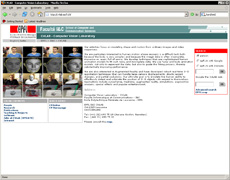
-
Pascal Fua's CV Lab from EPFL has released some free softwares for camera calibration in the context of pattern regognition (markers) for AR Application. Could be interesting to merge these functionalities with our planed and open source XjARToolkit in the future.
-
Softare download area on the CV Lab's web pages
Posted by patrick keller at 17:23
Hyperlinking reality
Christophe Guignard sent me this link about a research project lead by Nokia where their goal is to "hyperlink" real environment and super-impose digital information over real-world. Very applied approach where the phone, one more time, is the target and where visual markers are not there.
Read the article on Technology Review.
Researchers at Nokia are also developing a proprietary technology for their phones called MARA software (for Mobile Augmented Reality Applications).
Posted by patrick keller at 17:07
New (eco)design challenges?
Following the publication of the Stern review of climate change economics, John Thackara (Doors of Percpetion) sees some new challenges for Design.
-
Read more about it HERE.
Posted by patrick keller at 16:44
Small Office / Home Office (SOHO) in China
In MARK Magazine no2 (last summer), there is an article explaining that the construction of 'SOHO' housing is booming in China.
'SOHO', for 'Small Office / Home Office' is, has Femke Bijlsma is explaining in Mark "(...) a Japanese term with english roots. More explicitely, sohos are either the homes of people with internet-based work or small internet-related workstations at shared office. A phenomenon of the early '90s, the soho came into its own in 2002 when, for the first time, a housing project in Japan was developed specifically with the Soho in mind. (...) Suppressed for decades, the spirit of enterprise is rampant in a country teeming with entrepreneurs and start-up companies. Sohos in central Beijing are in great demand. The lower floors of these skyscrapers are occupied primarily by eateries, cafés, boutiques and travel agencies, while hair salons, massage parlours and all sorts of small offices fill the higher levels. Late into the evening, these buildings are hotbeds of feverish activity (...)."
-
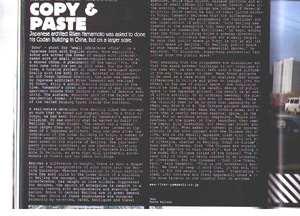
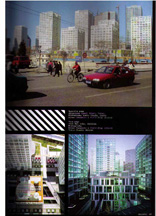
Posted by patrick keller at 18:10
Venice superblog

-
The Venice Biennal of Architecture runs a blog with different comments about the event but also with a section containing interviews of architects, curators, artists (Eliasson, Cook, Herzog, etc.). No particular topic in relation with the *Variable environment* project, but probably some interesting "super"content.
Posted by patrick keller at 11:15
Sustainable design & consumption
I've read in the last "Doors of Perception Report" by John Tackara a annoucement about SCORE conference. SCORE will be a new network of institutions that deal with sustainable design and sustainable consumption questions. It is supported by the European Community.
We mentioned early in this ra&d project that one of the main related question with the "mobility", "mobile" or "variable environment" context was the question of energy consumption. As this question is not our main focus during this project but as we also clearly recognized it as an important issue, we will therefore follow the work of SCORE with interests.
---
"SCORE IN WUPPERTAL
Mobility, agro-food, and energy use contribute 70% of the life cycle impacts of household consumption. But just telling people to go green is futile. Multiple actors need to work together at a system level for sustainable consumption and production to be realized. Welcome, then, SCORE! (Sustainable Consumption Research Exchanges) - an EU-funded network (28 institutions, and a few hundred professionals) an interchange for cases of radical sustainable consumption. SCORE!'s launch conference is 23 to 25 November in Wuppertal, Germany.
http://www.score-network.org"
(J. Thackara in Doors of Perception Report, September 2006)
Posted by patrick keller at 10:48
4d space / New book by Lucy Bullivant
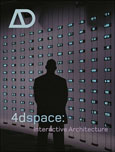
-
"In the next few years, emerging practices in interactive architecture are set to transform the built environment. Smart' design was once regarded as the preserve of museum exhibits or Jumbotrom advertising screens, but 'multi-mediated' interactive design has started entering into every domain of public and private life as a spatial medium, interactive architecture is revolutionising and reinventing our work, leisure and domestic spaces.
Fast-changing social contexts are dominated by the blurring of boundaries between work and play, information retrieval and use. Pliable and responsive digital environments raise the haptic and intuitive threshold of public and private space by harnessing physical and mental responses. Will interactive architecture embrace a wider scope of functions and experiences from sensing mechanisms, to the info-lounge, to the ambient home environment and the holistic hospital through customisable design possibilities? ..."
Posted by patrick keller at 15:07
Lighter than air architecture / Bartlett School of Architecture
Within the collaboration with the SWIS laboratory from EPFL (workshop_4), our first projetc idea was to develope a "lighter than air" architecture that would take into account the activities of 3-4 users/people, collaborate with them and activate spatial configurations and/or functions (shelter, lighting system, communication, etc. according to such activities. Due to time constraints, we are working on a reduced projects where swarm robots are still moving in 2d (large table configuration). It seems that the Bartlett school of architecture has the same kind of ideas we had and is starting to work on such a project. Follow the link below (we-make-money-not-art's blog or on interactive architecture dot org's blog as well).
-
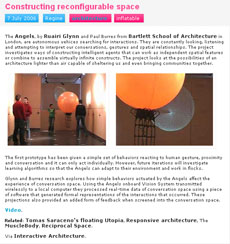
Posted by patrick keller at 14:45
Wireless wonder chip
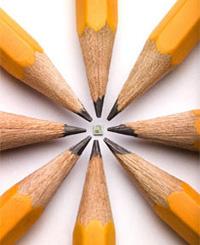
-
Regarding the problematic of "tagging real space" with digital and dynamic content (see our previous post related to visual markers for handheld camera), the hardware solution is also on its way.
Read it on MIT Technology review.
Posted by patrick keller at 16:51

















































